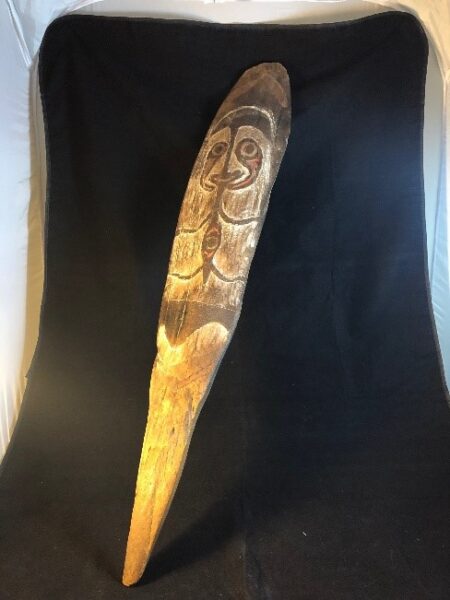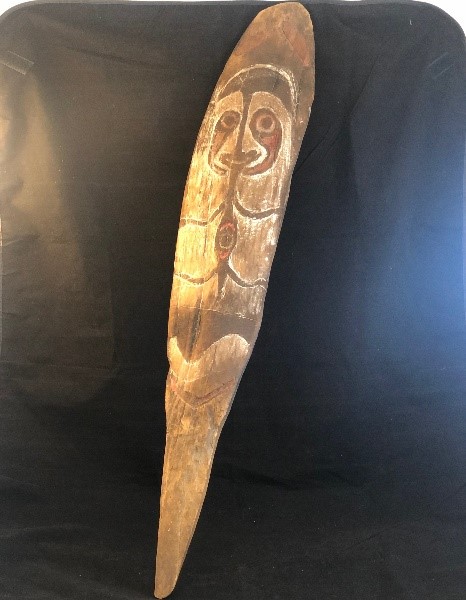Gope ancestor or spirit boards are memorial tablets that are usually painted black, red, and white and feature symbolic images of ancestors. “Dancing figure” images appear throughout Kerewa imagery; these images are easily recognized by the curved arms and legs that inspired the name, as well as by the curved teardrop shape of the eyes and the football shape of the stomach. Still visible on this Gope board are the remnants of dried white clay, red ochre, and black soot pigments that were used to enhance the imagery.
Gope boards are usually carved from the wood of a mulberry tree, which is known for its sturdy yet pliable nature. The board was carved with the image of a specific ancestor spirit, called titi ebiha, and the artist prayed over the board and presented an animal sacrifice such as a pig or a crocodile, to honor the spirit. The boards were then believed to be imbued with the spirits of the ancestors and were placed above entrances to men’s houses to protect those within from illnesses that might cause death.

Gope Ancestor Board with Titi Ebiha Dancing Figure
Kerewa culture
Early to mid-20th Century
Mulberry wood and pigment, L. 16 cm x W. 2 cm x H. 84 cm
Drury collection #1971.151

Gope Ancestor Board with Titi Ebiha Dancing Figure
Kerewa culture
Early to mid-20th Century
Mulberry wood and pigment, L. 16 cm x W. 2 cm x H. 84 cm
Drury collection #1971.151
For more information, you may contact the researcher(s) noted in the title of this exhibit entry, or Dr. Billie Follensbee, the professor of the course, at BillieFollensbee@MissouriState.edu
